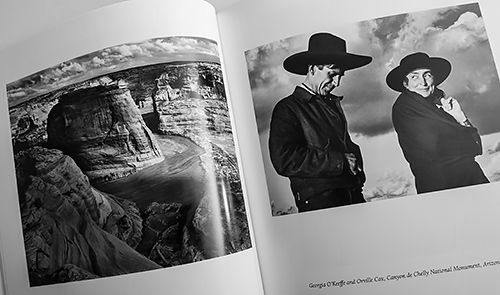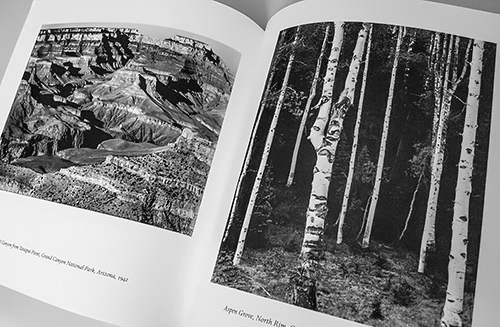Photo Corners headlinesarchivemikepasini.com
![]()
A S C R A P B O O K O F S O L U T I O N S F O R T H E P H O T O G R A P H E R
![]()
Enhancing the enjoyment of taking pictures with news that matters, features that entertain and images that delight. Published frequently.
Book Bag: Ansel Adams, The Grand Canyon and the Southwest



14 May 2019
On the 100th anniversary of the establishment of the Grand Canyon National Park, Little, Brown and Company has published Ansel Adams: The Grand Canyon and the Southwest. He loved the place from the moment he set eyes on it.

In a 1937 letter to Alfred Stieglitz, he described is allure:
The skies and the land are so enormous, and the detail so precise and exquisite that wherever you are you are isolated in a glowing world between the macro and the micro, where everything is sidewise under you and over you, and the clocks stopped years ago.
He has been introduced to the Southwest by San Francisco insurance magnate Albert Bender, who had driven him down there in 1927. The enchanting introduction by William Turnage tells the story. A tale that includes Adams's collaboration with Mary Austin in Taos Pueblo, a two-year book publishing project.
William Dassonville coated a rag-based paper specially made by Crane for the book with a rich silver-bromide emulsion based on his Charcoal Black printing paper, which Adams greatly admired. Each of the 108 books produced had 12 prints and Adams made each print in the book in his darkroom -- 1,296 prints in all.

The book sold out in two years at $75 but, as Adams noted in his 1985 An Autobiography, it was then going for $12,000.
The images in this paperback were not, of course, printed by Adams. But they are, as the copyright page notes, published in accordance with his wishes by Little, Brown and Company, who he designated as the sole authorized publisher of his works.
And they have done a masterful job, the handsome duotones extending the dynamic range of the monochrome images. The book was printed by VeronaLibri in Italy.

Two Eras. Analog (left) and digitial (right) reproductions of the same image.
You will have seen a few of these before and it's instructive to compare earlier printings. Above, we've photographed his image From Point Imperial as it appeared in the first edition of his autobiography in 1985 and as it appears on the varnished cover of this book.
The differences are remarkable. And they reflect two eras in printing technology: the (presumably) analog age and the digital. The digital age wins this competition with more shadow detail and a greater separation in the midtones. You can actually see the far mountain range that is nearly invisible in the earlier reproduction.
But it illustrates what Adams often said and even wrote on page 2 of his volume on The Print:
A great amount of creativity lies in the making of a print with endless subtle variations which are yet all tied to the original concept represented by the negative. I have often said that the negative is similar to a musician's score, and the print to the performance of that score. The negative comes to life only when "performed" as a print.
He himself rendered his negatives quite differently during his own lifetime, as you can see in any retrospective exhibit of his work.
This then would be the digital performance of his Southwest images. An interpretation of his work that squeezes out darker blacks and more detail, an achievement made possible by modern technology.

In addition to the introduction and the images, the book includes a 23-page selection of letters and writings by Adams about his work in the region.
Beautiful places, beautiful images, beautiful reproductions in an affordable paperback that reflects modern taste within a historical appreciation. In a word, superb.
Ansel Adams: The Grand Canyon and the Southwest by Ansel Adams, published by Little, Brown and Company, 112 pages, $21.99 (or $14.57 at amazon.com).